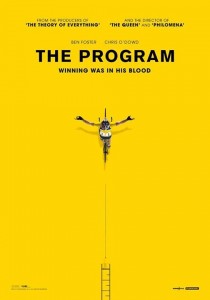 George Stevens’ The Greatest Story Ever Told, an adaptation of the New Testament, has something of a tarnished reputation as being one of the ridiculously expensive epics that almost bankrupted every major studio in the Old Hollywood. Over the course of its three and a half hour running time and gigantic cast of A-list actors (some of which only appear in bit roles), it gives painstaking detail to the life of Jesus and the times he inhabited.
George Stevens’ The Greatest Story Ever Told, an adaptation of the New Testament, has something of a tarnished reputation as being one of the ridiculously expensive epics that almost bankrupted every major studio in the Old Hollywood. Over the course of its three and a half hour running time and gigantic cast of A-list actors (some of which only appear in bit roles), it gives painstaking detail to the life of Jesus and the times he inhabited.
Director Stevens, a dedicated Christian who prior to this made such films as Giant and Shane, employs his usual epic scope, which is at times visually breath taking; such as the image of a road lined with men hanging from crosses for miles and miles, but otherwise works to a negative effect in that he’s so pre-occupied with being epic he forgets that the story is essentially an intimate one. An example is Stevens’ constant need to shoot in vast wide shots that show Jesus preaching on mountain tops when you would think it’s what he’s actually saying that should be emphasized. Another peculiar visual choice is the back drop of Monument Valley. Surely with its iconic jagged features that had been displayed so prominently in westerns (and had indeed become synonymous with the genre), Steven’s could have found a more appropriate and less distracting setting for the Holy Land.
The cast of the film, most of whom were extremely popular at the time, are a mixed bag. Max Von Sydow takes a break during his run of Ingmar Bergman masterpieces to play what, with his heavily tanned Scandinavian features, is surely the most oddly looking Jesus in cinema. To his credit he has the charisma and gravity to pull it off despite some wooden lines. The usually excellent character actor Claude Rains is simply tired in his last screen role, but Charlton Heston in the supporting role as a militant John the Baptist bellows his lines with incredible conviction. Donald Pleasence is excellent as an incarnation of the devil and Telly Savalas as Herrod who gives Jesus his death sentence tones down his usual crazy shtick to excellently display a confident, but scarred leader. John Wayne, in what was at the time one of the films most disparaged moments, makes a cameo as a Roman guard. In retrospect however, his role is nowhere near as self-inflating as Sidney Poiter helping Jesus carry his cross.
The film is adamant in sticking closely to the gospels, so much so that it eventually comes to feel like it’s just going through the motions as we watch for the standard beats of the Passion storyline (such as Peter’s denial of Jesus), that Stevens milks for full effect. If he was more content to entertain his audience, you can’t help but think he could have cut an hour out of the film and it wouldn’t have made terribly much difference to the overall story.
Despite some slow storytelling, The Greatest Story Ever Told has some truly good moments amongst a lot of silly ones and is worth watching, like a lot of the sixties period epics, simply for its enormous scope and interesting cast.





